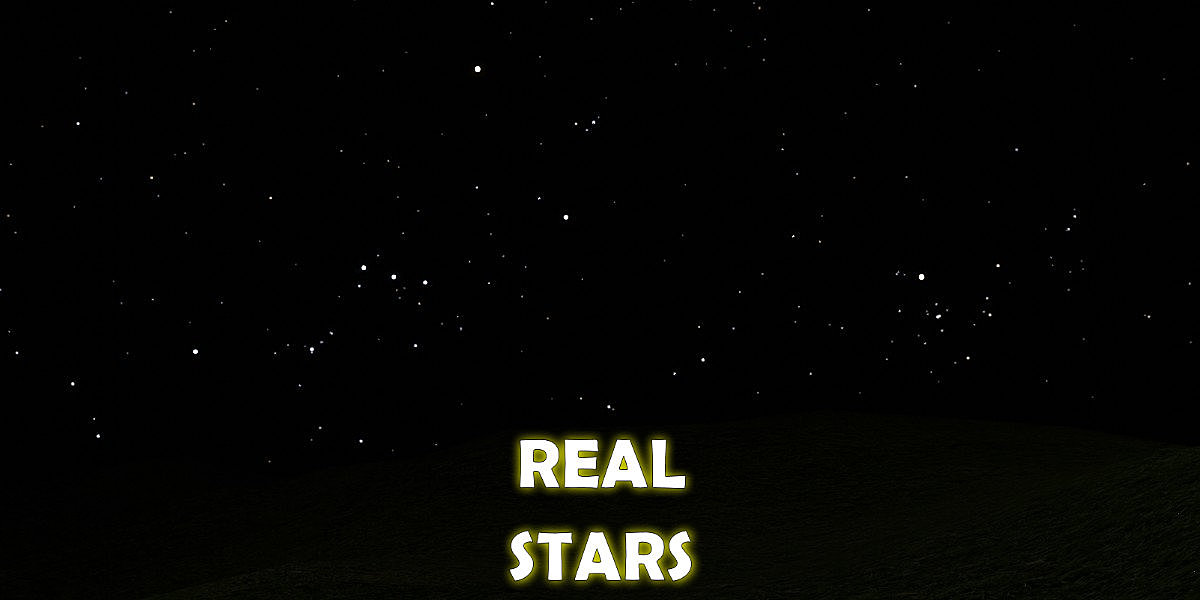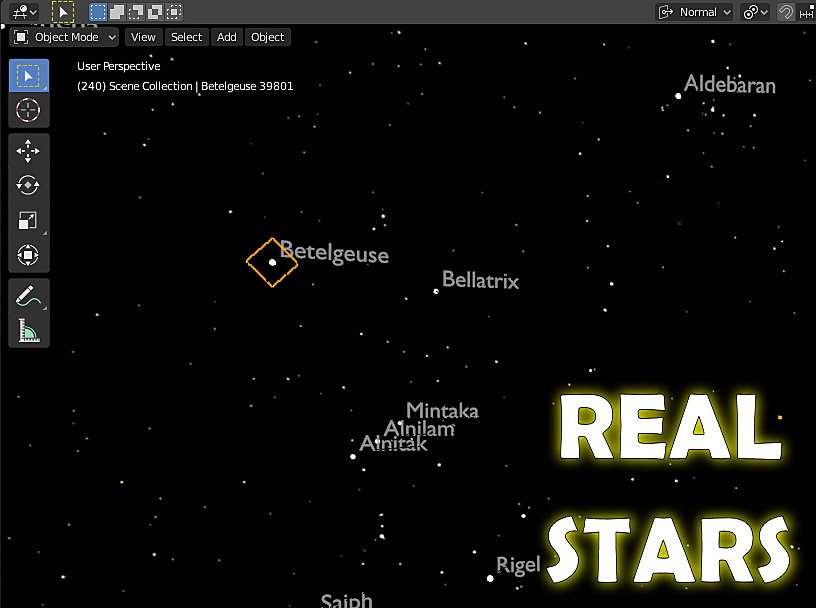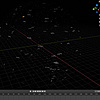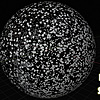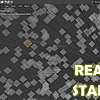Add astronomical realism to your night, space and sci-fi scenes with this starscape of over 5000 stars, created from real-world data of the night sky. Change the apparent brightness and appearance of the stars and set them spinning over your head.
"Real Stars SkyDome" is a .blend file containing the 5044 brightest stars in the real night sky. Each star is a planar quad mesh placed on the surface of an imaginary sphere with a radius of 1000m, hence the name "SkyDome".
The material of each star uses real astronomical data for its brightness and colour. A single shared node group allows direct control over some key parameters for easy control over the look of the starscape. Or create your own node setups for complete artistic freedom. The mathematics, physics and artistic workings of the node group are fully documented so you can dive straight in with your own experiments.
Text objects of the names of some of the brightest stars are also dotted around the sky. These are in a separate collection so they can be turned on or off with the single click.
All the stars and star names can be rotated in unison to easily orient the starscape however you want. In the .blend file, this orientation is driven by a latitude property and from the timeline so that you can angle the stars based on any latitude on Earth. Then press play on the timeline to watch the stars wheel overhead as they do in real life.
You can add the .blend file "as is" to serve as a backdrop to your night-time scenes, or you can use it to create your own environment or object textures. A panoramic camera is included ready to render an equirectangular environment texture of the whole sky. Or you can generate the different sides of a six-sided skybox using the SkyboxCamera.
If you just want a set of HDRs and PNGs of the real-world stars, please check out my companion product "Real Stars HDRI Collection". The texture files in that product include 8k HDR renders of the sky plus partially transparent overlays with the names of the brighter stars, both of which can be generated from this SkyDome product. As an added bonus, the HDRI collection also includes an overlay of the boundaries and names of the constellations and an example .blend file with a world environment background texture ready to orient using real-world parameters.
With 13 pages of documentation explaining the different collections, the control object empties and the maths and physics behind the materials, you'll have no problem creating realistic starscapes for your blends like an astronomical pro!
Astronomical Notes
The starscape was created using astronomical data of over 5000 of the brightest stars in the night sky. This includes all the stars typically visible with the naked eye on a clear, dark night.
Real-world data on the positions, brightness and B–V colour values of each star were used to determine the location, size, emission strength and colour of each star's material (with some artistic licence!).
By default, the stars are oriented as if you were stood the north pole (Latitude 90 degrees) and facing in the direction of 0 hours Right Ascension. So Polaris (the North Star) is above you in the +z direction. Decrease the latitude property, and Polaris will get closer to the horizon in the +y direction (North)
Credits:
The HYG database (http://www.astronexus.com/hyg) was used for most of the star data with some corrections and conversions from other sources - and my cosmology degree :-)
For licensing reasons, the CSV data file is not included with this product. But I have included the python code I used to extract the data. If you have suggestions for optimisation or additional features, drop me a line and I'll see what I can do.
Material Node Group
A single node group is used to control the materials of all the stars.
The screenshot below gives you an ideas of what you're getting. The column of three Value nodes at the left offer a quick and easy way to control the main size and brightness parameters. The maths nodes at the top use real physics to turn a B-V Colour input for each star into a blackbody temperature colour, and some tunable logarithmic maths turns a Magnitude input into an emission strength. The texture and mapping nodes at the bottom enable artistic freedom over the size and shape of the stars. DON'T PANIC! All of this is documented.



